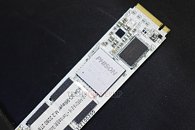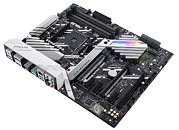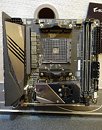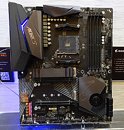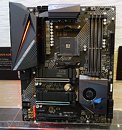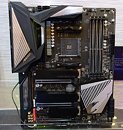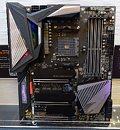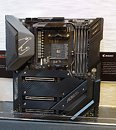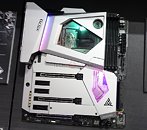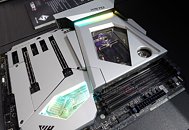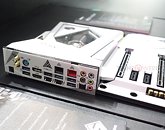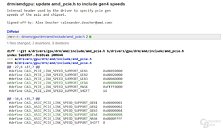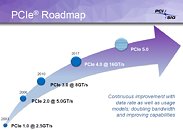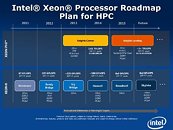
GALAX HOF E16 is a Monstrous M.2 PCIe Gen 4 SSD Dressed in White
With AMD "Valhalla" desktop platform mainstreaming PCI-Express gen 4.0, several SSD manufacturers put out their first products that can take advantage of it, this Computex. The drive with the highest on-paper transfer rates has to be the HOF E16 from GALAX, which will also be sold under the Galaxy and KFA2 brands in various markets. Built in the M.2-2280 form-factor, the drive features an M.2 PCI-Express 4.0 x4 host interface (backwards-compatible with older PCIe generations), with 64 Gbps of interface bandwidth on tap. The drive comes in capacities of 1 TB, 2 TB, and segment-first 4 TB.
The HOF E16 uses the same heatsink GALAX deployed on the older generation of HOF M.2. A block of aluminium pulls heat from the drive's controller, while a flattened copper heat-pipe spreads heat across. The drive is based on the new Phison E16 controller that's cushioned by an LPDDR4 DRAM chip, and wired to 96-layer 3D TLC NAND flash memory. The drive offers sequential read speeds of up to 4,800 MB/s, and sequential writes of up to 4,000 MB/s. 4K random reads are rated at up to 750,000 IOPS, and 4K random writes up to 700,000 IOPS.
The HOF E16 uses the same heatsink GALAX deployed on the older generation of HOF M.2. A block of aluminium pulls heat from the drive's controller, while a flattened copper heat-pipe spreads heat across. The drive is based on the new Phison E16 controller that's cushioned by an LPDDR4 DRAM chip, and wired to 96-layer 3D TLC NAND flash memory. The drive offers sequential read speeds of up to 4,800 MB/s, and sequential writes of up to 4,000 MB/s. 4K random reads are rated at up to 750,000 IOPS, and 4K random writes up to 700,000 IOPS.


